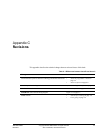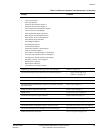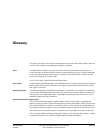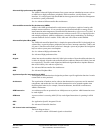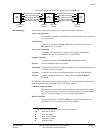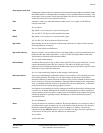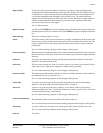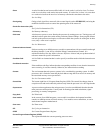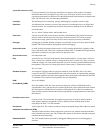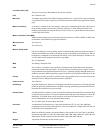
Glossary
ARM DDI 0363E Copyright © 2009 ARM Limited. All rights reserved. Glossary-4
ID013010 Non-Confidential, Unrestricted Access
Read ID width
The number of bits in the ARID bus.
Read issuing capability
The maximum number of active read transactions that a master interface can
generate.
Write ID capability
The maximum number of different AWI D values that a master interface can
generate for all active write transactions at any one time.
Write ID width
The number of bits in the AWI D and WID buses.
Write interleave capability
The number of active write transactions for which the master interface is capable
of transmitting data. This is counted from the earliest transaction.
Write issuing capability
The maximum number of active write transactions that a master interface can
generate.
The following AXI terms are slave interface attributes. To obtain optimum performance, they
must be specified for all components with an AXI slave interface
Combined acceptance capability
The maximum number of active transactions that a slave interface can accept.
This is specified instead of write or read acceptance capability for slave interfaces
that use a combined storage for active write and read transactions.
Read acceptance capability
The maximum number of active read transactions that a slave interface can
accept.
Read data reordering depth
The number of active read transactions for which a slave interface can transmit
data. This is counted from the earliest transaction.
Write acceptance capability
The maximum number of active write transactions that a slave interface can
accept.
Write interleave depth
The number of active write transactions for which the slave interface can receive
data. This is counted from the earliest transaction.
Banked registers Those physical registers whose use is defined by the current processor mode. The banked
registers are R8 to R14.
Base register A register specified by a load/store instruction that is used to hold the base value for the
instruction’s address calculation. Depending on the instruction and its addressing mode, an
offset can be added to or subtracted from the base register value to form the virtual address that
is sent to memory.





